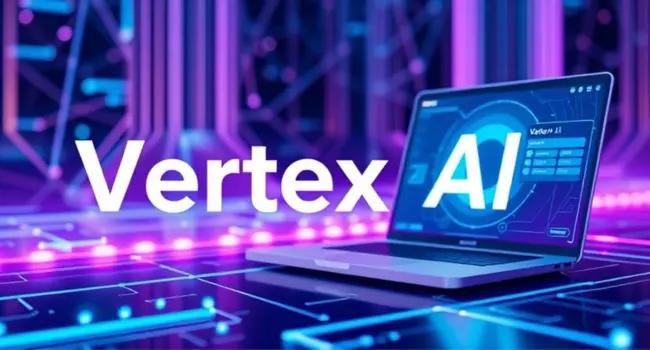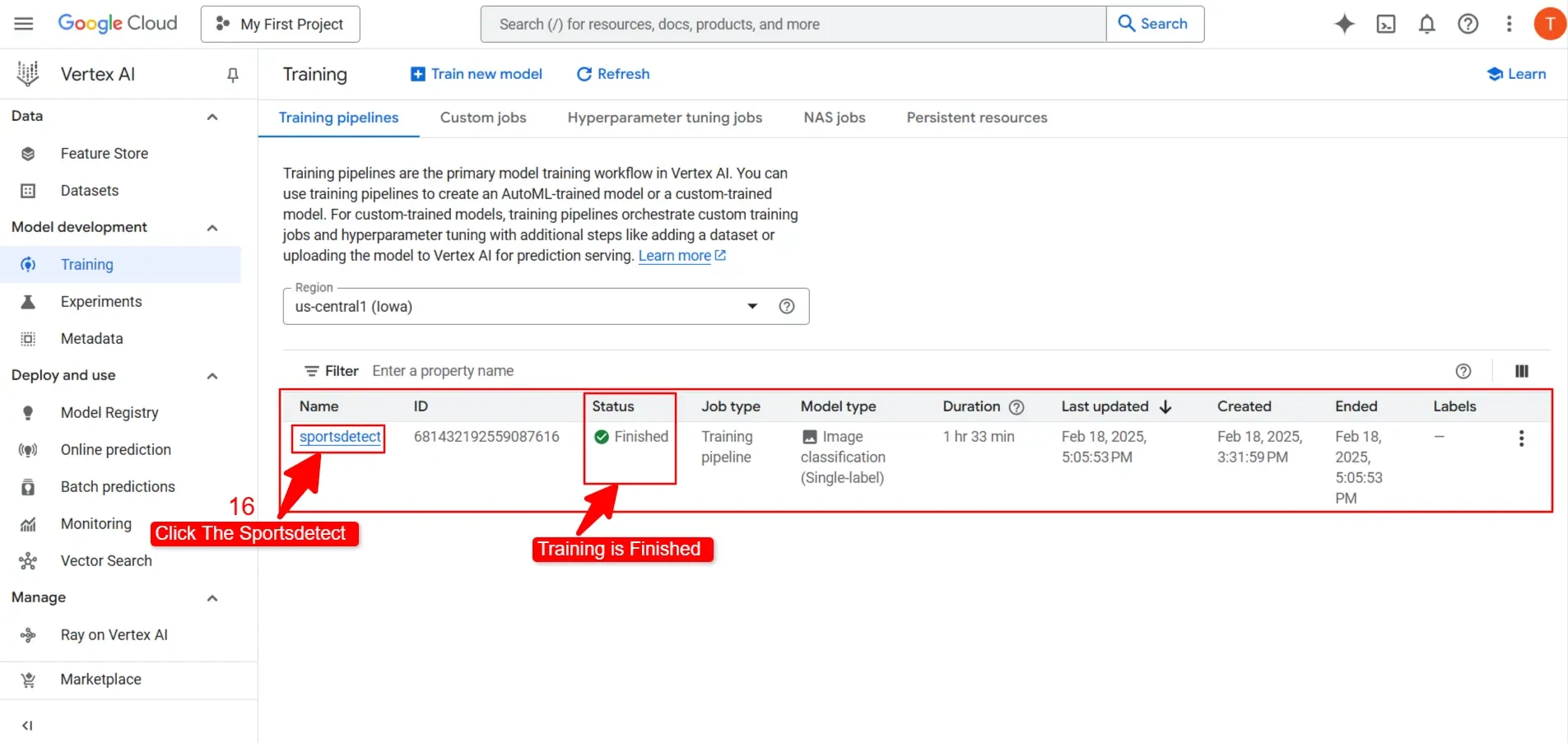Machine learning (ML) is changing industries like healthcare, finance, retail, and autonomous systems. From AI-powered medical diagnosis to personalized product recommendations, ML helps businesses automate tasks, improve efficiency, and make smarter decisions using data.
But while building an ML model is important, the real challenge is deploying and managing it at scale. Many companies struggle with:
- Setting up ML infrastructure - Managing servers, GPUs, and TPUs is complex.
- Scaling models - Handling large amounts of predictions efficiently.
- Monitoring model performance - Ensuring accurate real-time predictions.
- Versioning & Updating Models - Managing multiple versions without downtime.
Without the right tools, deploying ML models can be time-consuming and expensive. That's where Vertex AI comes in.
What is Vertex AI?
Vertex AI is a fully managed ML platform on Google Cloud that helps businesses train, optimize, deploy, and manage ML models easily. Whether you're a beginner using AutoML or an expert working with TensorFlow or PyTorch, Vertex AI provides the tools you need.
Why Use Vertex AI?
- Fast Model Training - Train ML models quickly using AutoML or custom code (TensorFlow, PyTorch, scikit-learn).
- One-Click Model Deployment - Deploy ML models without complex infrastructure setup.
- Built-in MLOps Automation - Automate model monitoring, retraining, and updates.
- Cost Optimization - Reduce ML costs with Google's optimized GPUs, TPUs, and batch processing.
Now, let's explore the advantages and disadvantages of using Vertex AI.
| Advantages of Vertex AI | Disadvantages of Vertex AI | ||
| 1. | No need to manage infrastructure - Google Cloud takes care of servers, GPUs, and TPUs, so you can focus on building and deploying models instead of managing hardware. | 1. | Can be expensive for large models - Training deep learning models with TPUs and GPUs can be costly. To save money, use batch processing and Spot VMs. |
| 2. | No coding required with AutoML - Train ML models without writing code. Just upload data, select a target, and let Vertex AI handle the rest. | 2. | Requires Google Cloud expertise for custom models - If you're deploying custom ML models, you need to understand IAM roles, API permissions, and Kubernetes. |
| 3. | Scales automatically - Whether you need 100 or 1 million predictions per second, Vertex AI adjusts resources automatically. You only pay for what you use, making it cost-efficient. | 3. | Limited control over hardware - Since Vertex AI is fully managed, users can't customize GPU settings, networking, or storage configurations like they can in on-prem ML environments. |
| 4. | Works seamlessly with Google Cloud services - Integrates with BigQuery, Cloud Storage, and Dataflow without extra configuration, making data processing and deployment easier. | 4. | Only works on Google Cloud - If your company relies on AWS or Azure, switching to Vertex AI may not be ideal. |
| 5. | Great for both beginners and experts - Use AutoML for quick results or custom frameworks like TensorFlow, PyTorch, and XGBoost for full control over model training. | 5. | Requires an internet connection - Since Vertex AI is cloud-based, an active internet connection is required for training and deployment. If you need offline ML, consider Kubeflow or TensorFlow Serving. |
In this guide, you'll learn:
- How to set up Vertex AI on Google Cloud.
- How to create a dataset and upload images.
- How to train an ML model using Vertex AI AutoML.
- How to deploy and serve predictions.
Let's get started!
1. Setting Up Vertex AI on Google Cloud
To begin, you need to access the Google Cloud Console and enable Vertex AI.
Step 1: Open Google Cloud Console
- Navigate to Google Cloud Console.
- Sign in with your Google account.
- Select or create a Google Cloud Project (e.g., My First Project).
Step 2: Search for Vertex AI
- Click the Search bar at the top.
- Type "Vertex AI" and press Enter.
- Click Vertex AI from the search results.
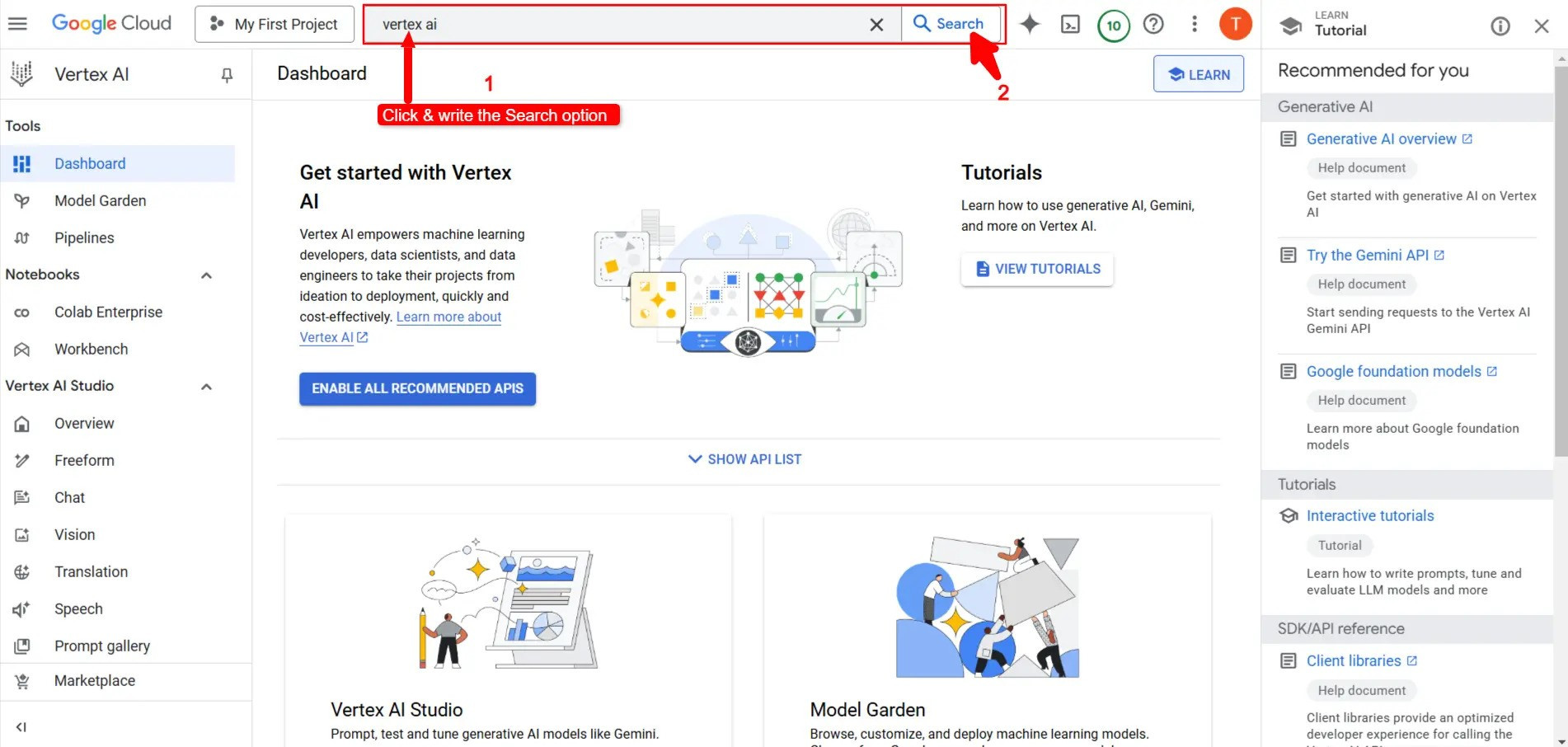
Step 3: Enable Vertex AI API
- Click "Enable all recommended APIs" if not enabled.
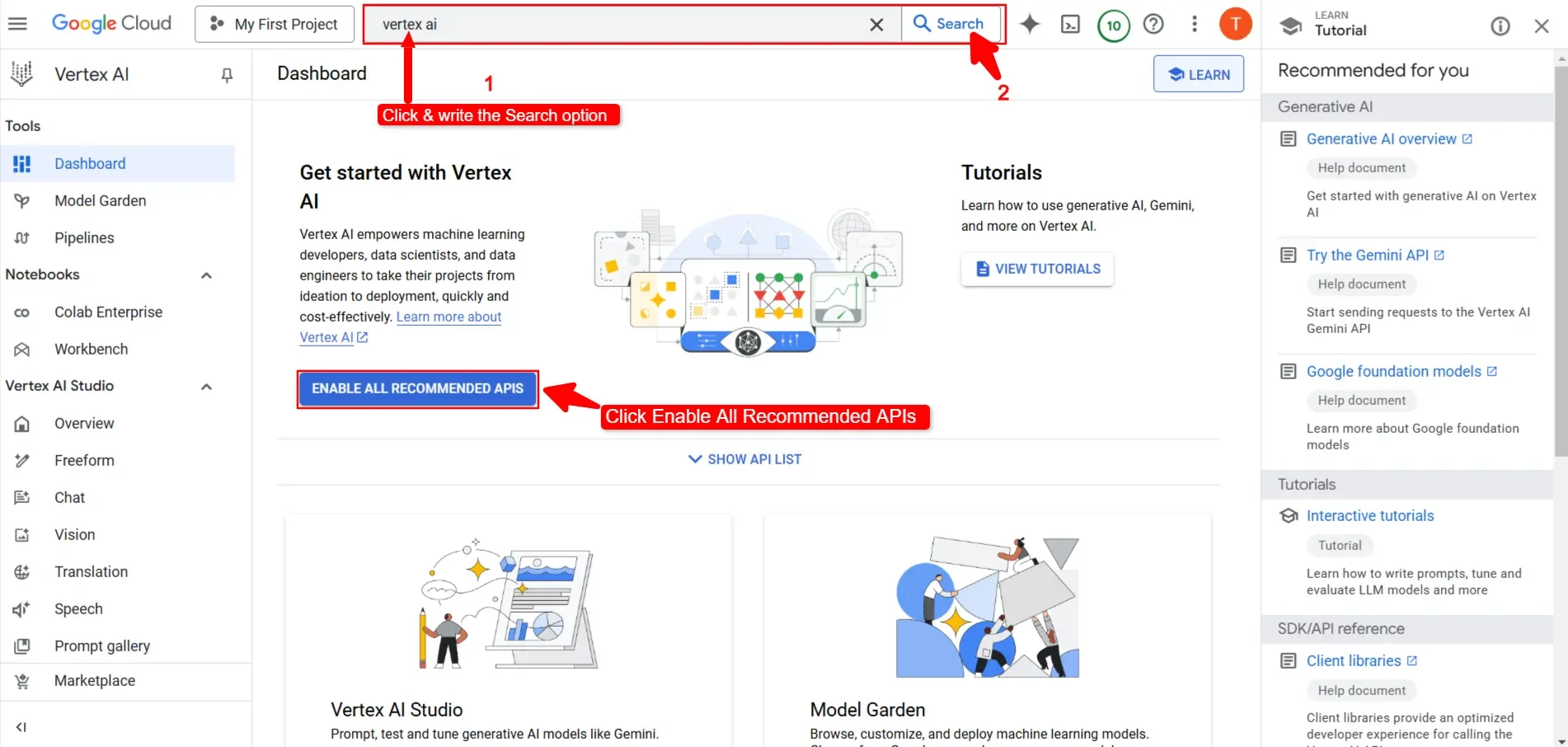
2. Creating a Dataset in Vertex AI
- Before training an ML model, you must create a dataset.
Step 4: Navigate to the Datasets Section
- In the Vertex AI menu, click "Datasets".
- Click "Create Dataset".
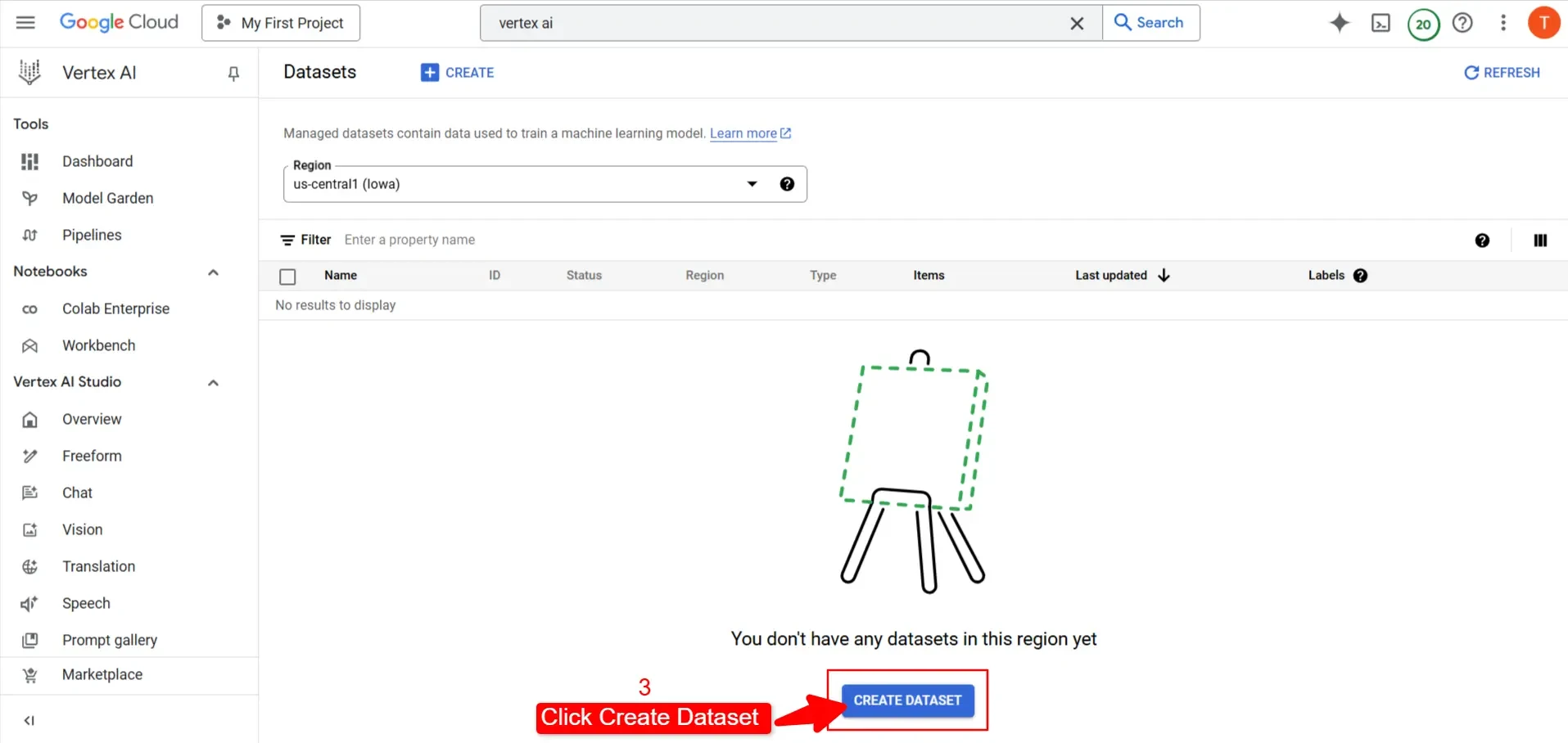
Step 5: Choose Dataset Type
- Select "Image" as the dataset type.
- Choose "Single-label classification" (for classifying images into one category).
- Click "Create".
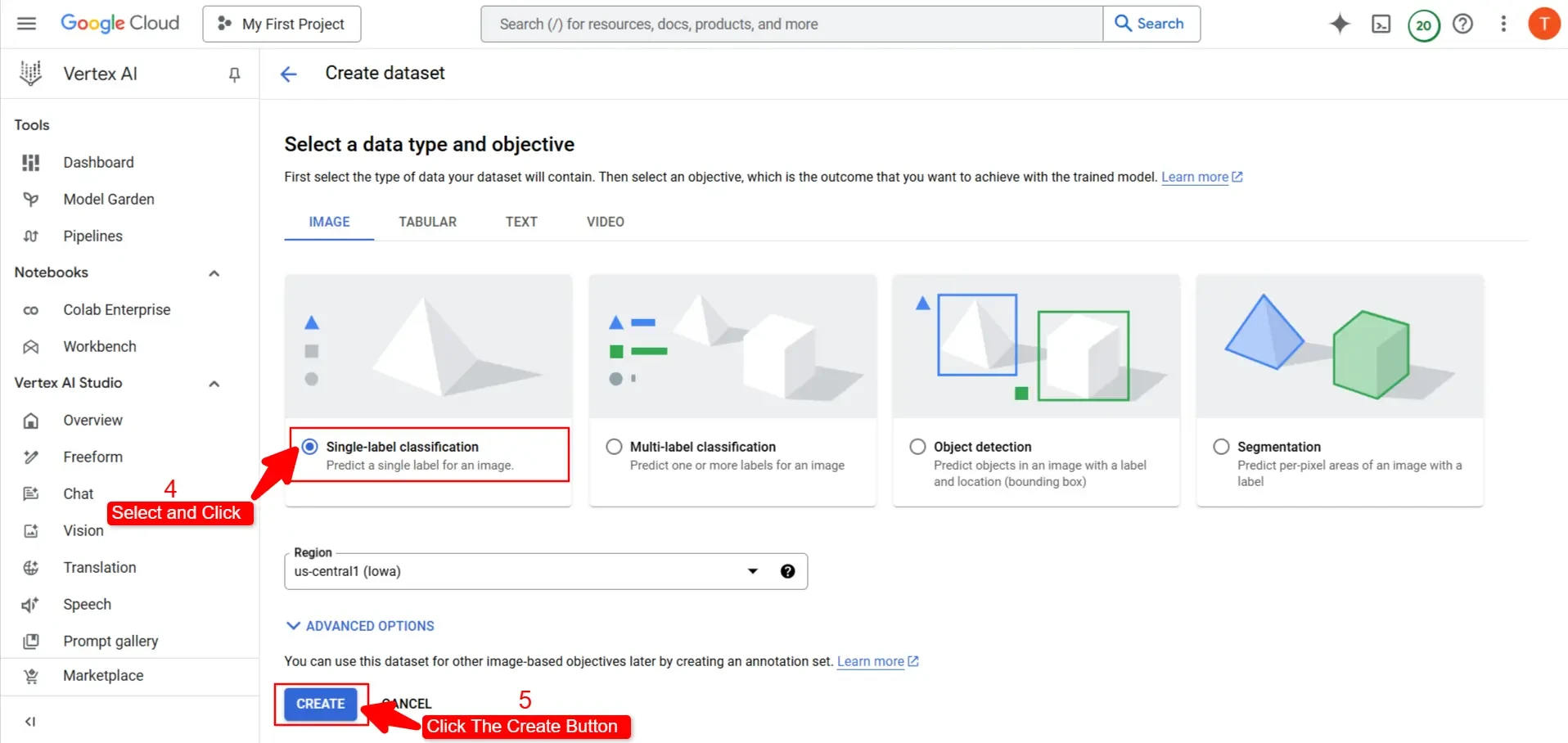
3. Uploading Images to the Dataset
Once the dataset is created, you need to upload images.
Step 6: Upload Images
- Click "Import Data".
- Select "Upload images from your computer".
- Click "Select Files", choose images, and upload them.
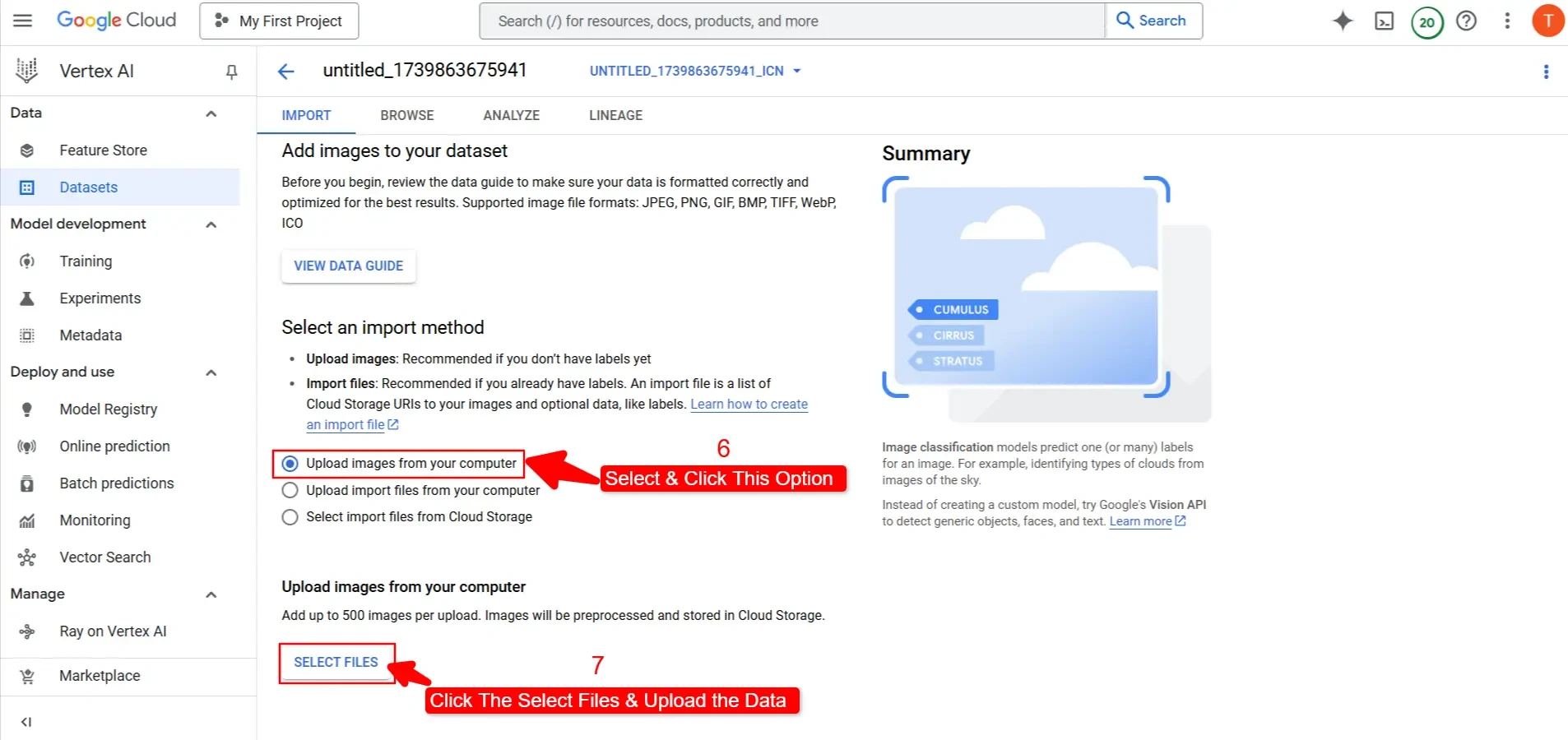
Step 7: Add Labels to Images
- Click "Add new label" and provide meaningful labels (e.g., horse_raching, rugby, track_bicycle).
- Assign labels to uploaded images.
- Click The "Train new model"
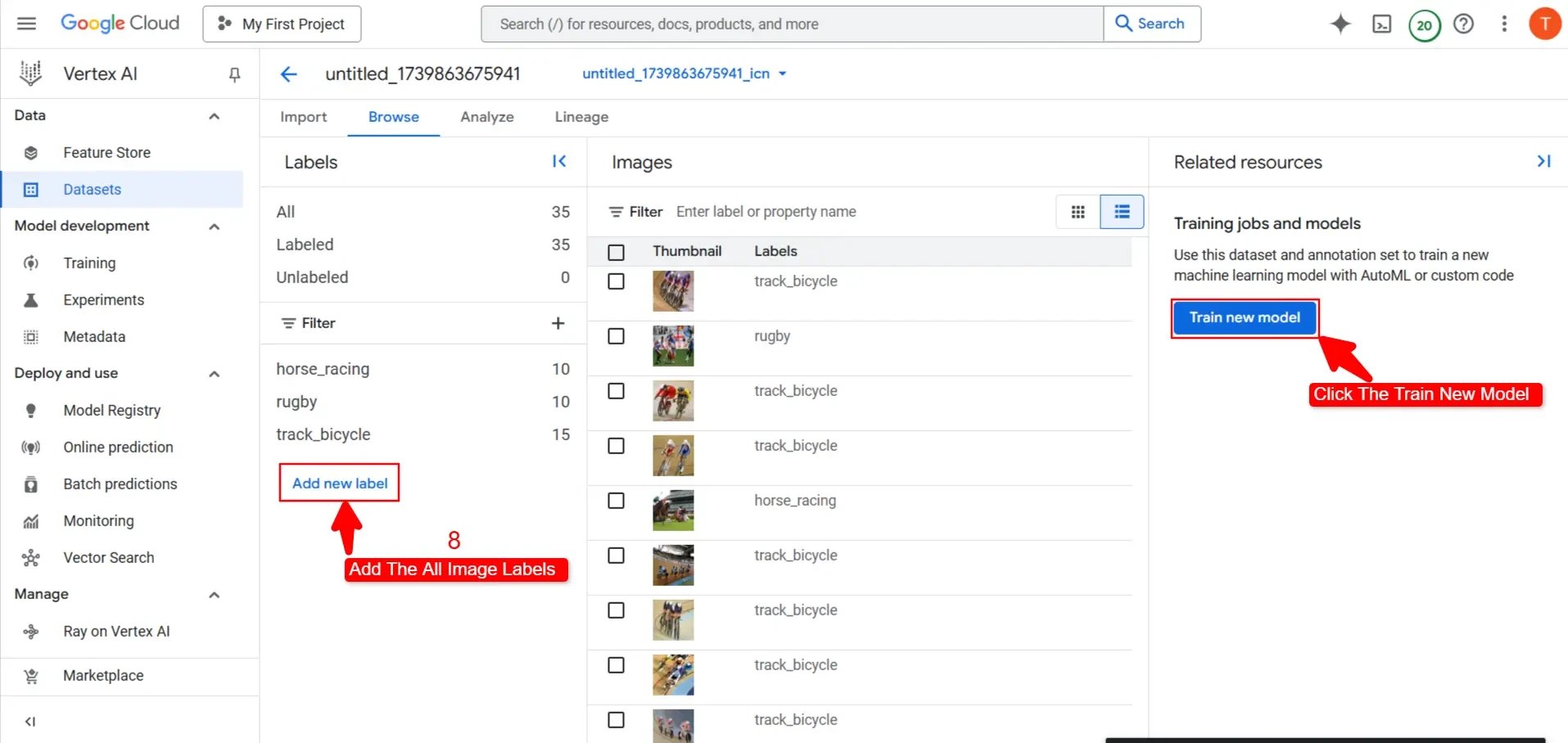
4. Training a Machine Learning Model in Vertex AI
- After uploading data, you need to train an ML model.
Step 8: Start Model Training
- Choose AutoML for easy training.
- Click "Continue".
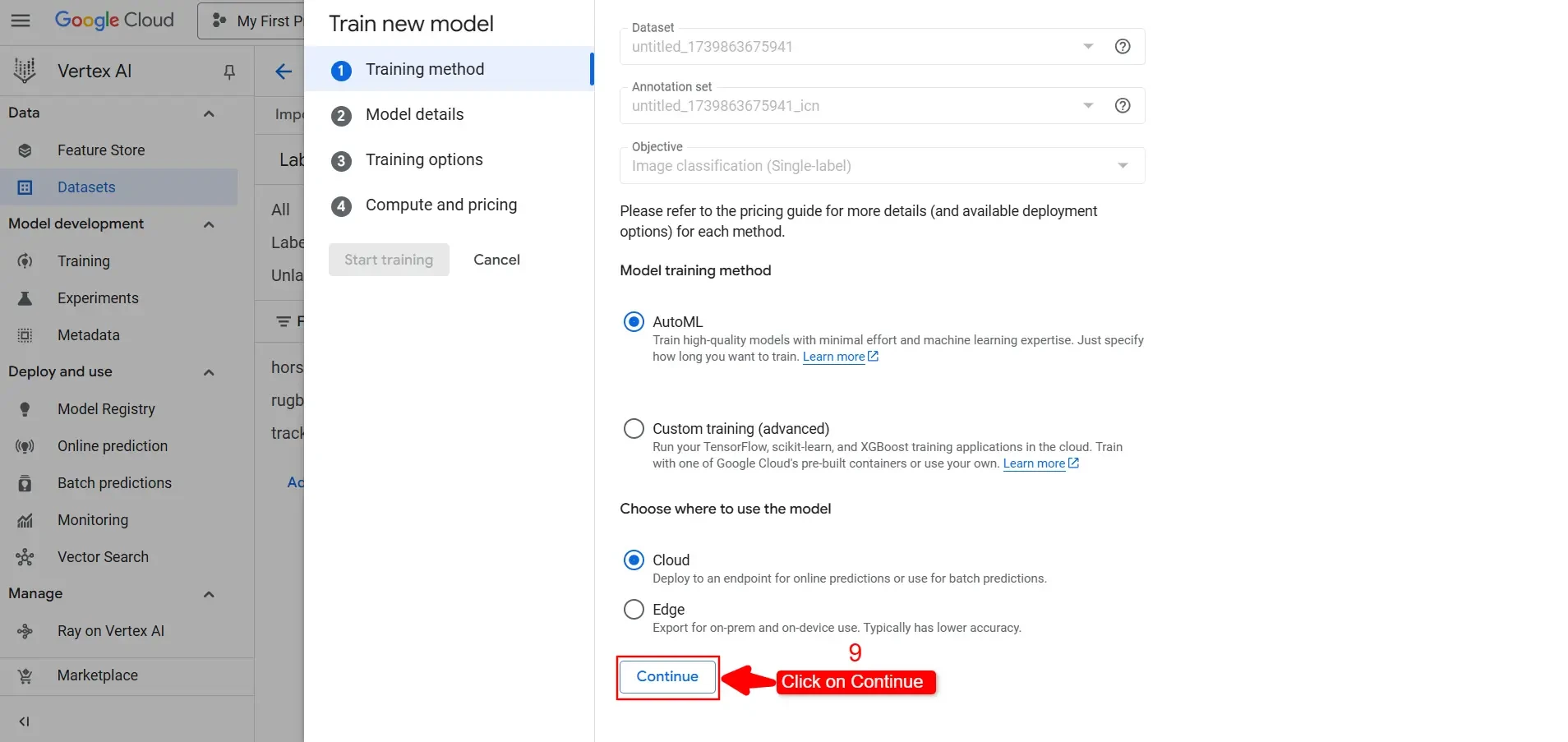
Step 9: Configure Model Training
- Enter a Model Name (e.g., SportsDetect).
- Click "Continue".
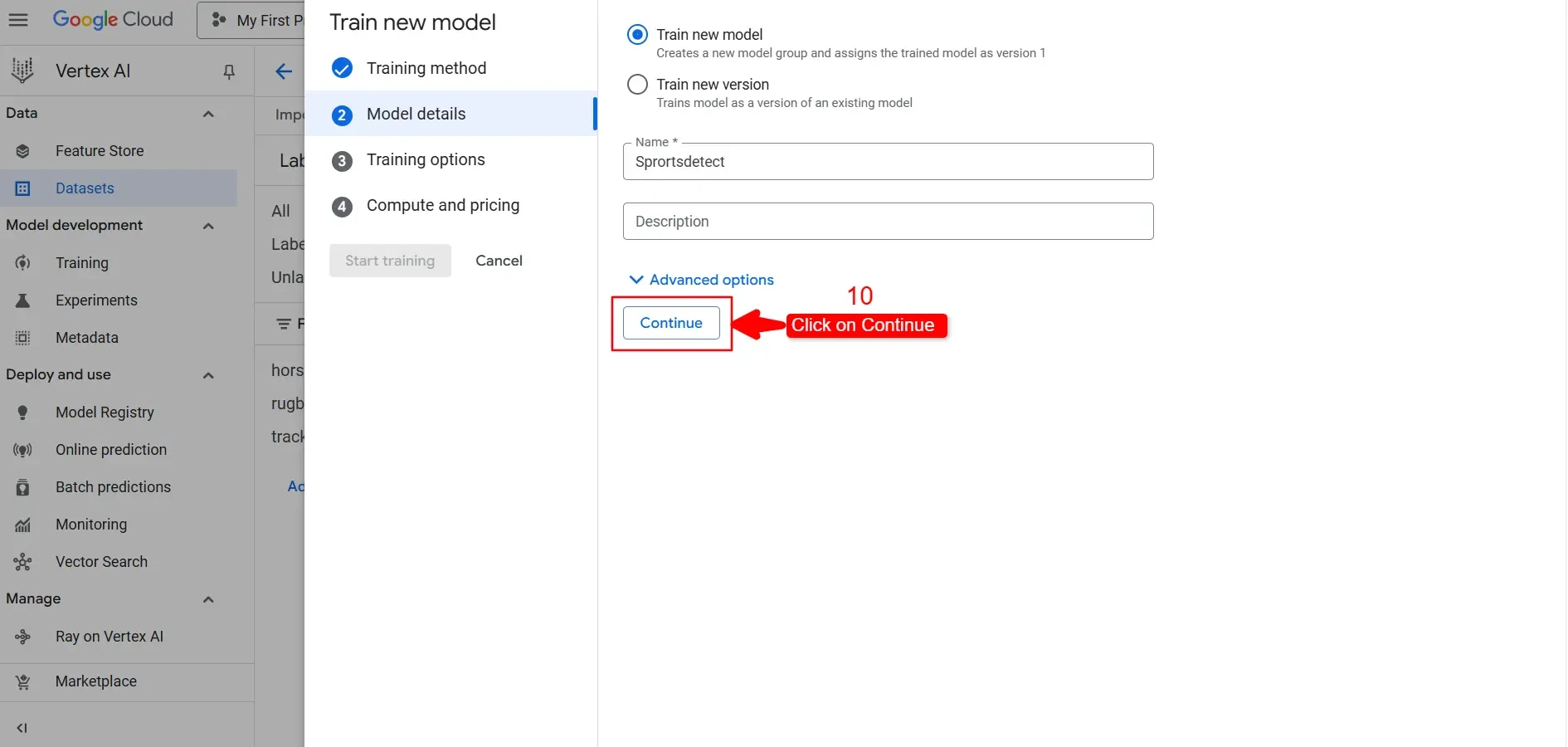
Step 10: Select Training Options
- Choose "Higher Accuracy" for better performance.
- Click "Continue".
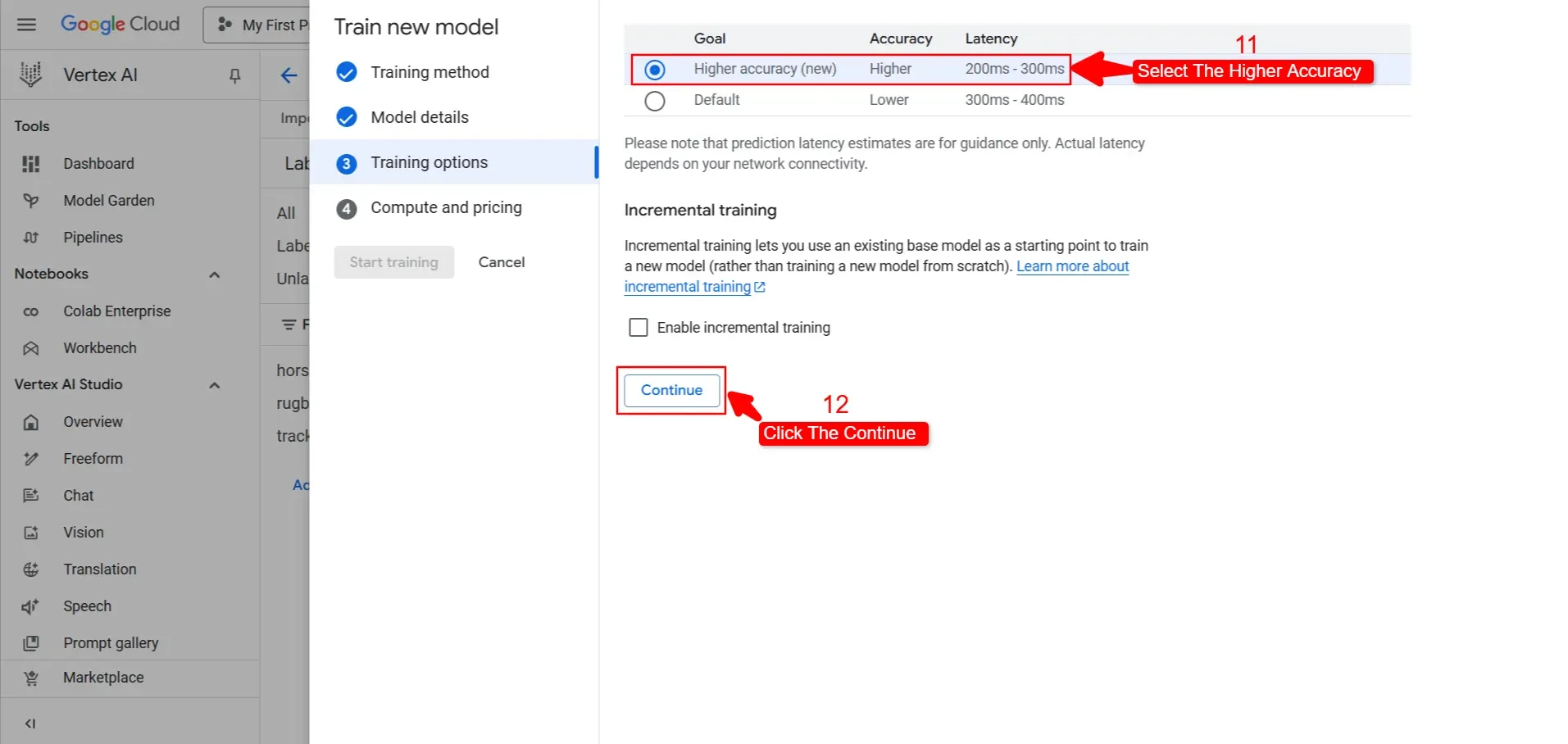
Step 11: Set Training Budget
- Enter 8 node hours (for cost-efficient training).
- Click "Start Training".
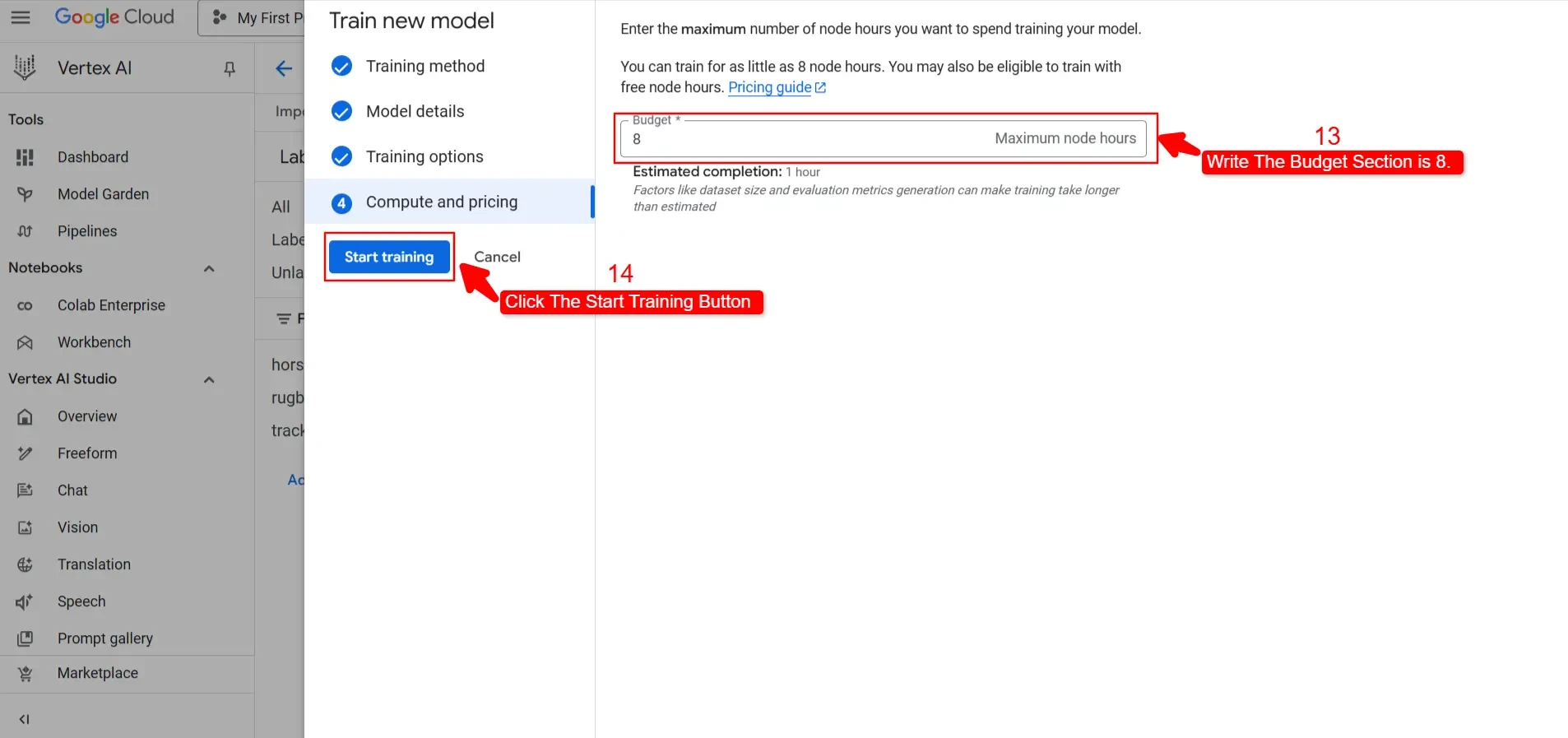
Step 12: Monitor Training Status
- Navigate to the Training section in Vertex AI.
- Check Status (should show "Training" while running).
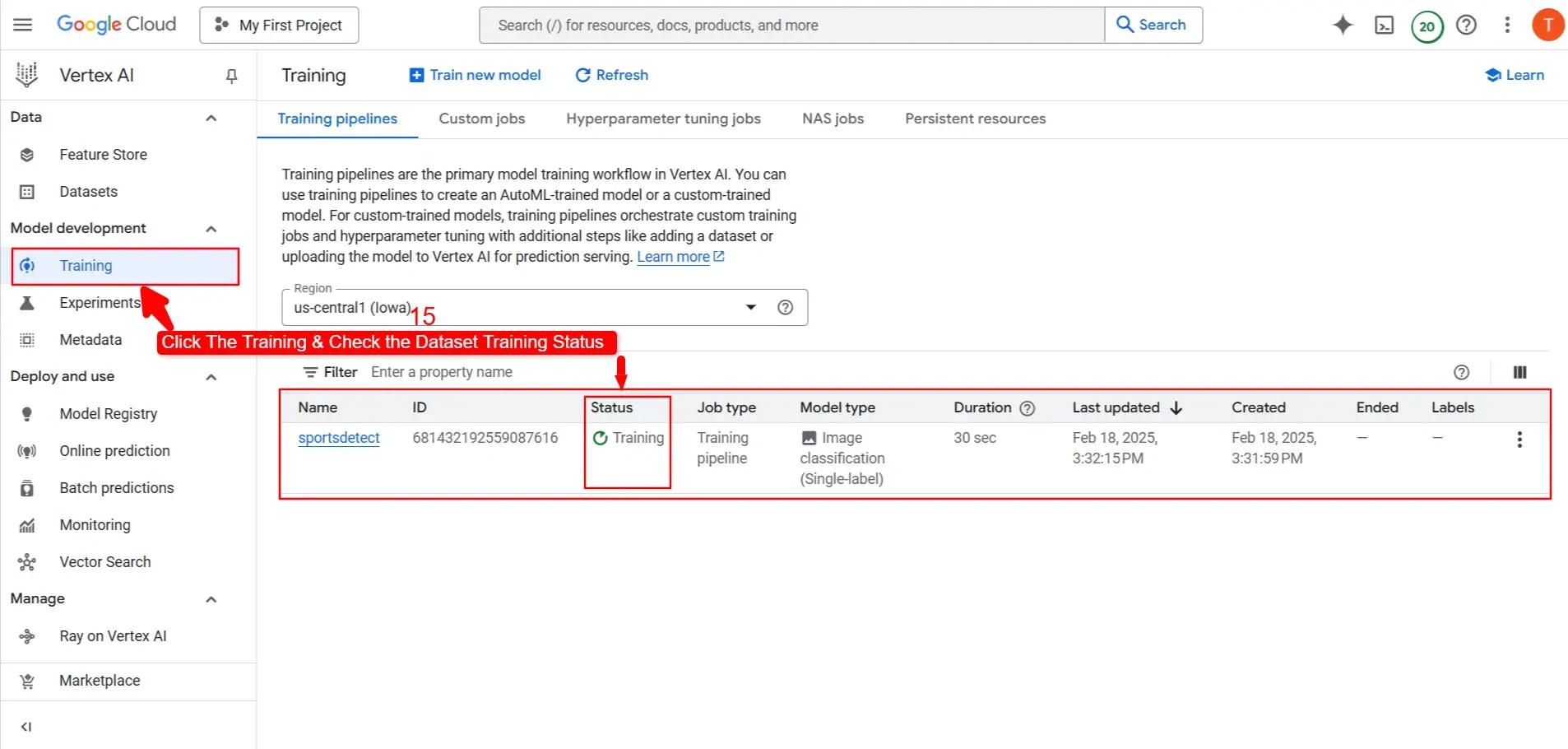
- Click the Sportsdetect.
5. Deploying the Trained Model in Vertex AI
Once training is complete, you need to deploy your model.
Step 13: Register the Model
- Go to Model Registry in Vertex AI.
- Click "Deploy & Test".
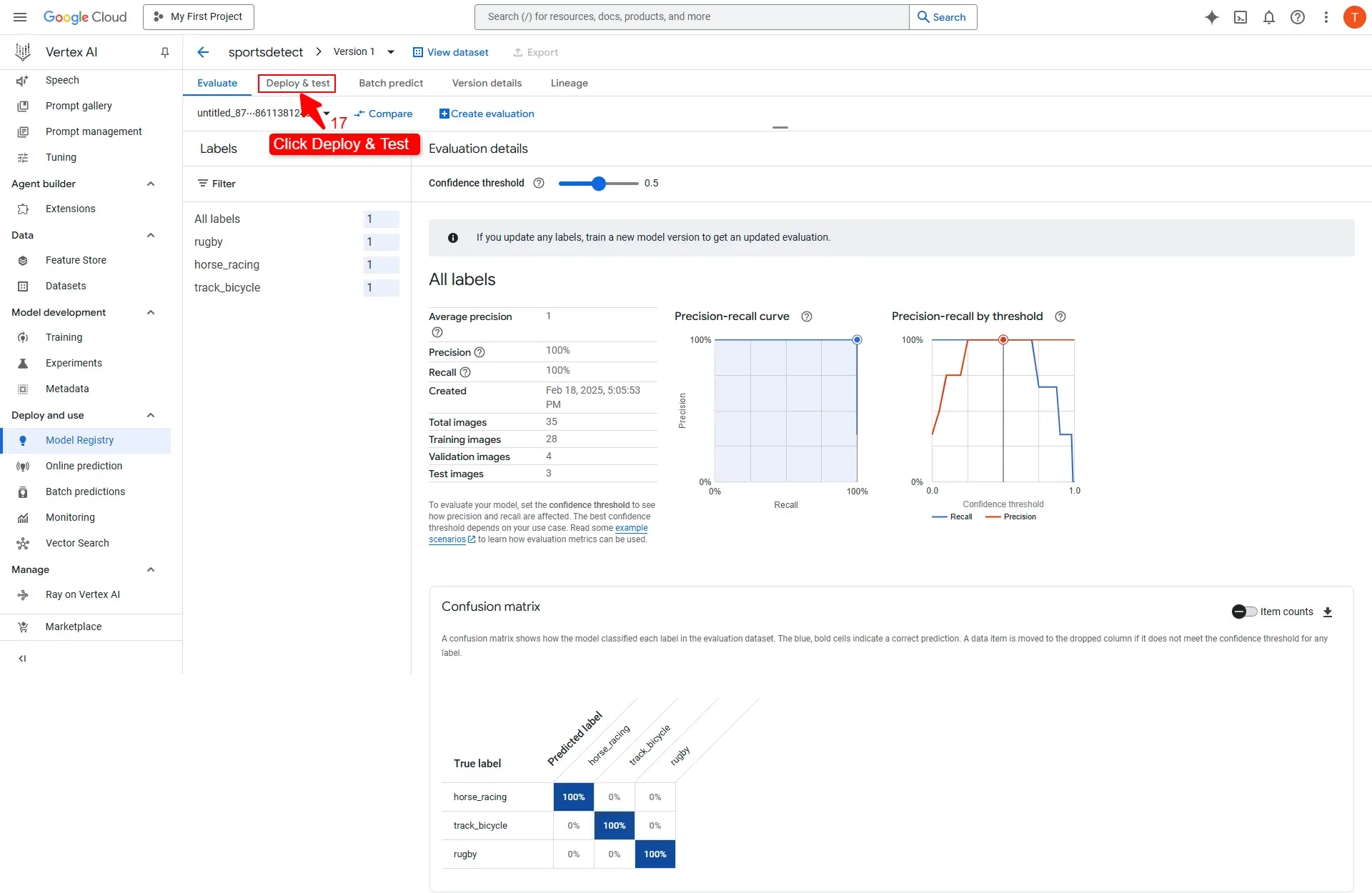
Step 14: Create an Endpoint
- Set endpoint name (e.g., sportsdetect-endpoint) & Click "Continue".
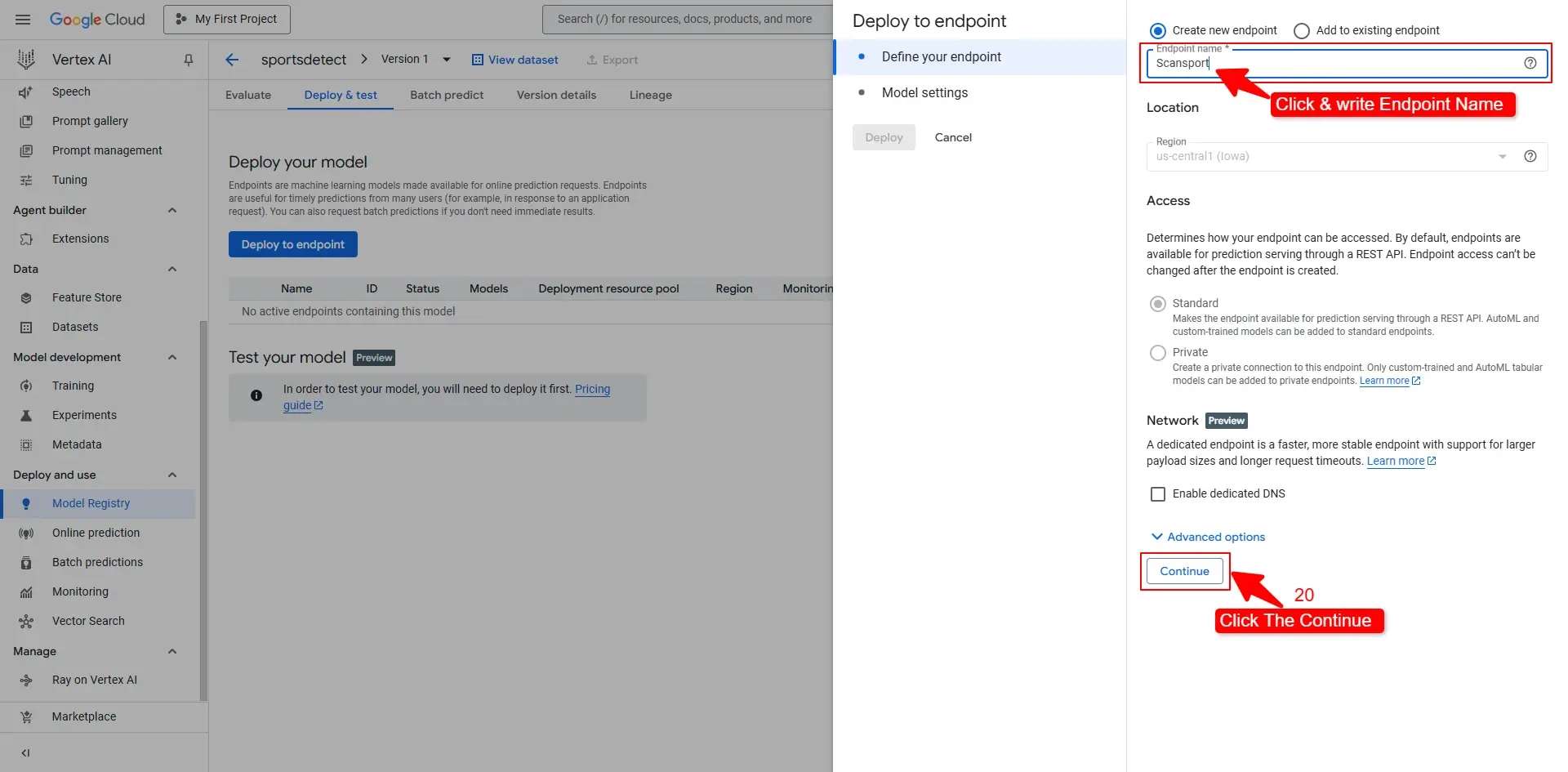
- Click the number of compute nodes. Then write the compute nodes as "2". And Click the "Done" button.
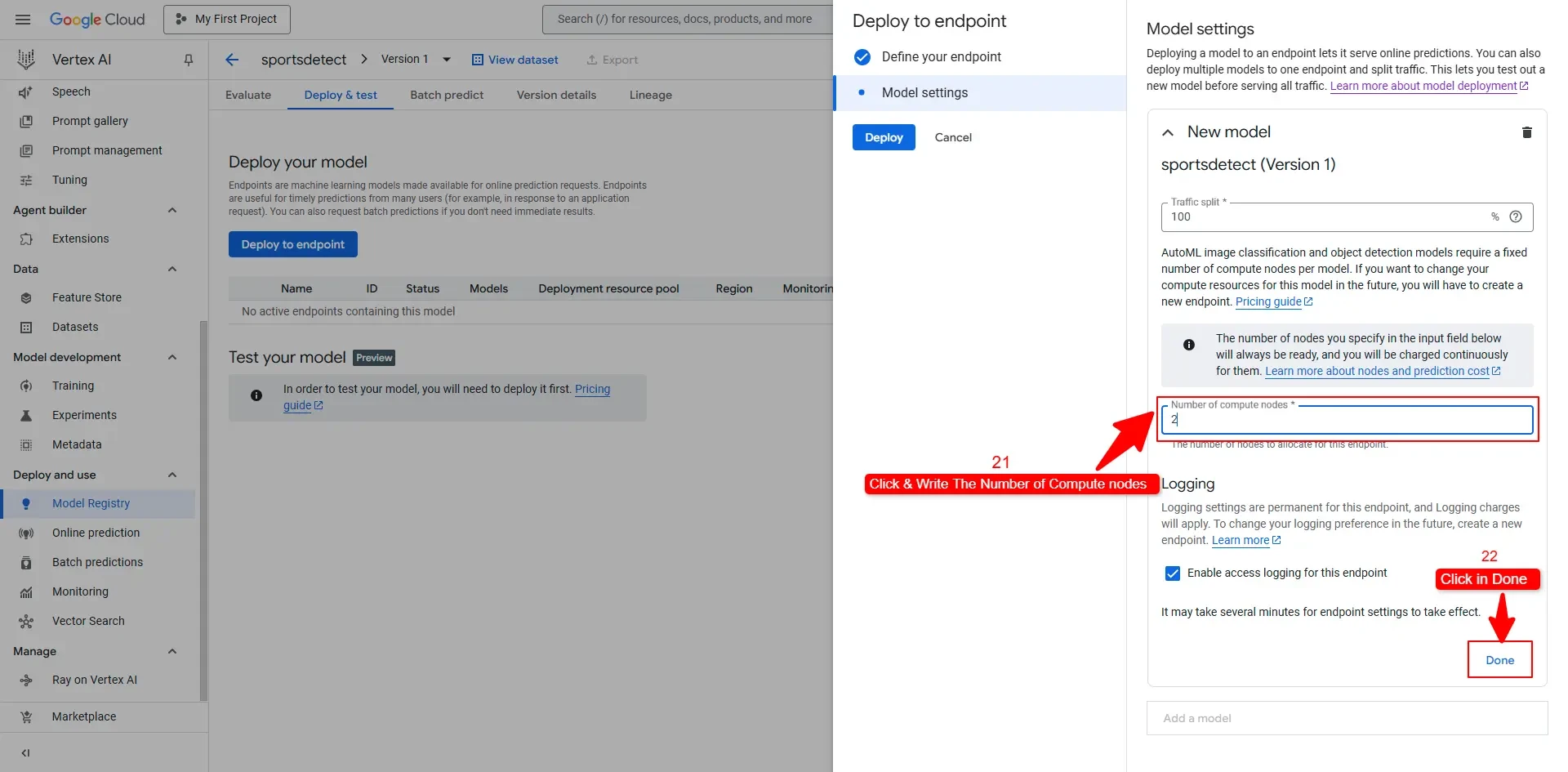
- Click "Deploy".
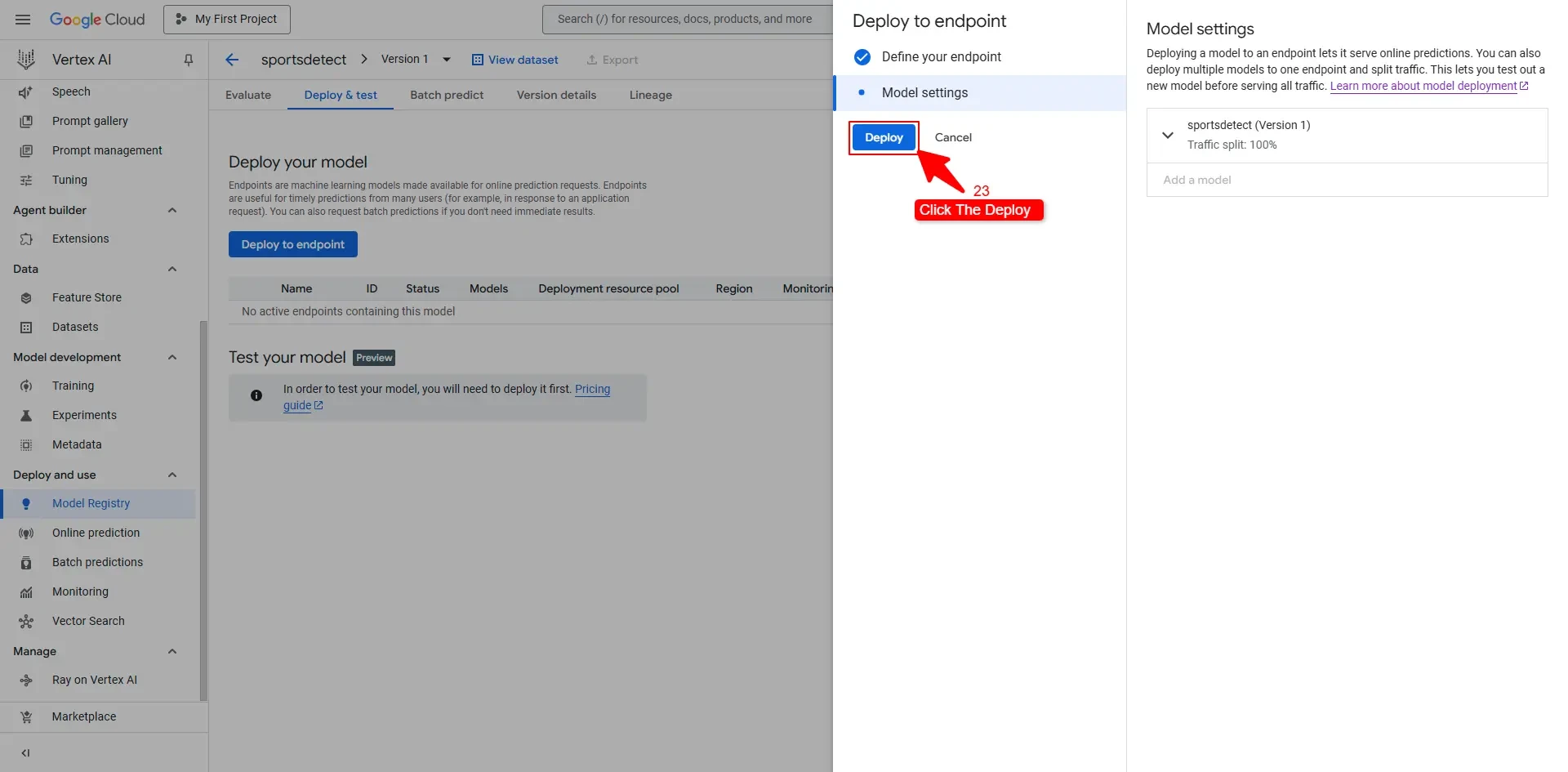
- Click the "Deploy to Endpoint".
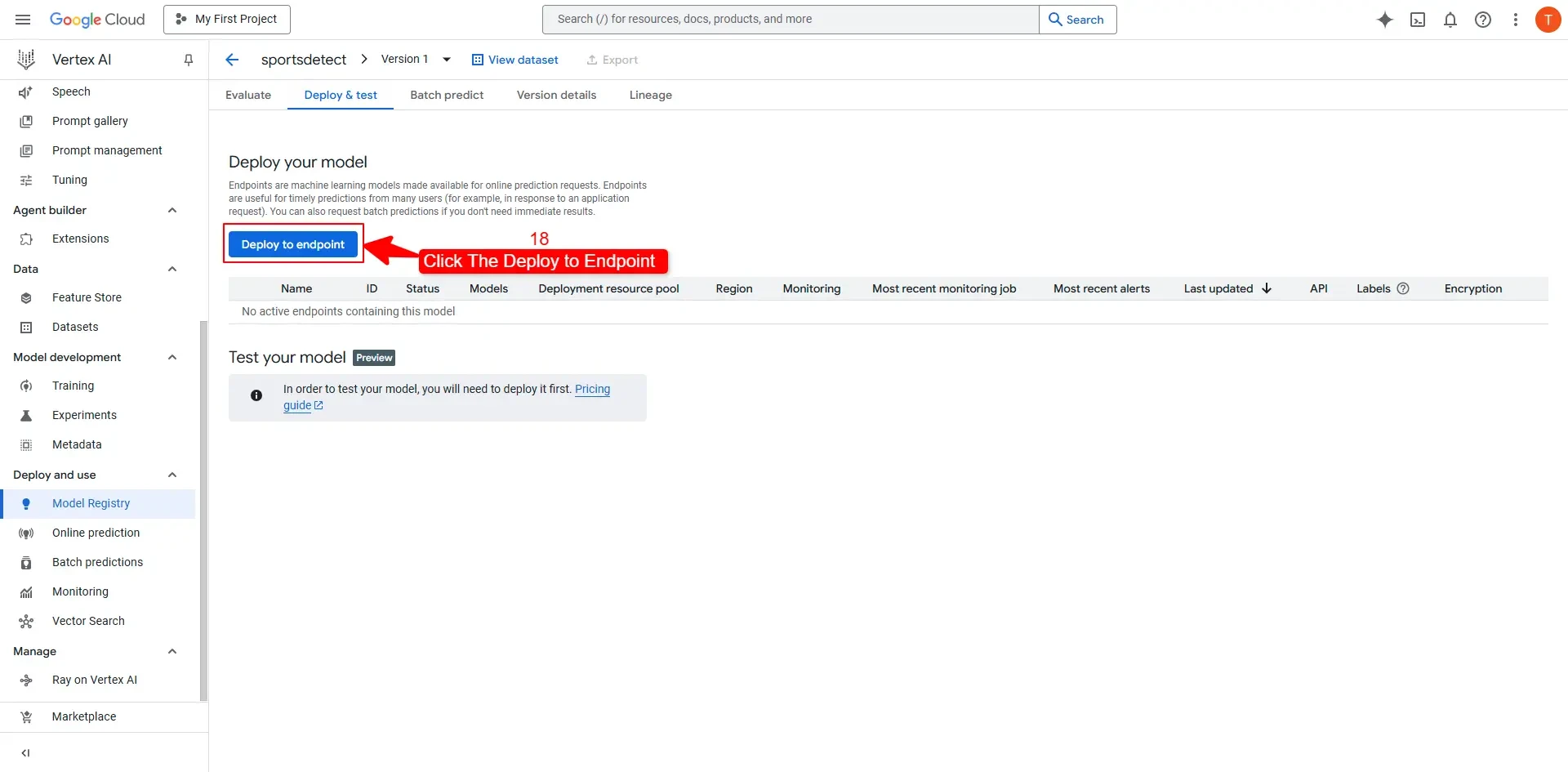
6. Making Predictions Using the Deployed Model
Once the model is deployed, you can make real-time predictions.
- The Model is Active.
- Click the "Upload Image" & Upload the Detection image.
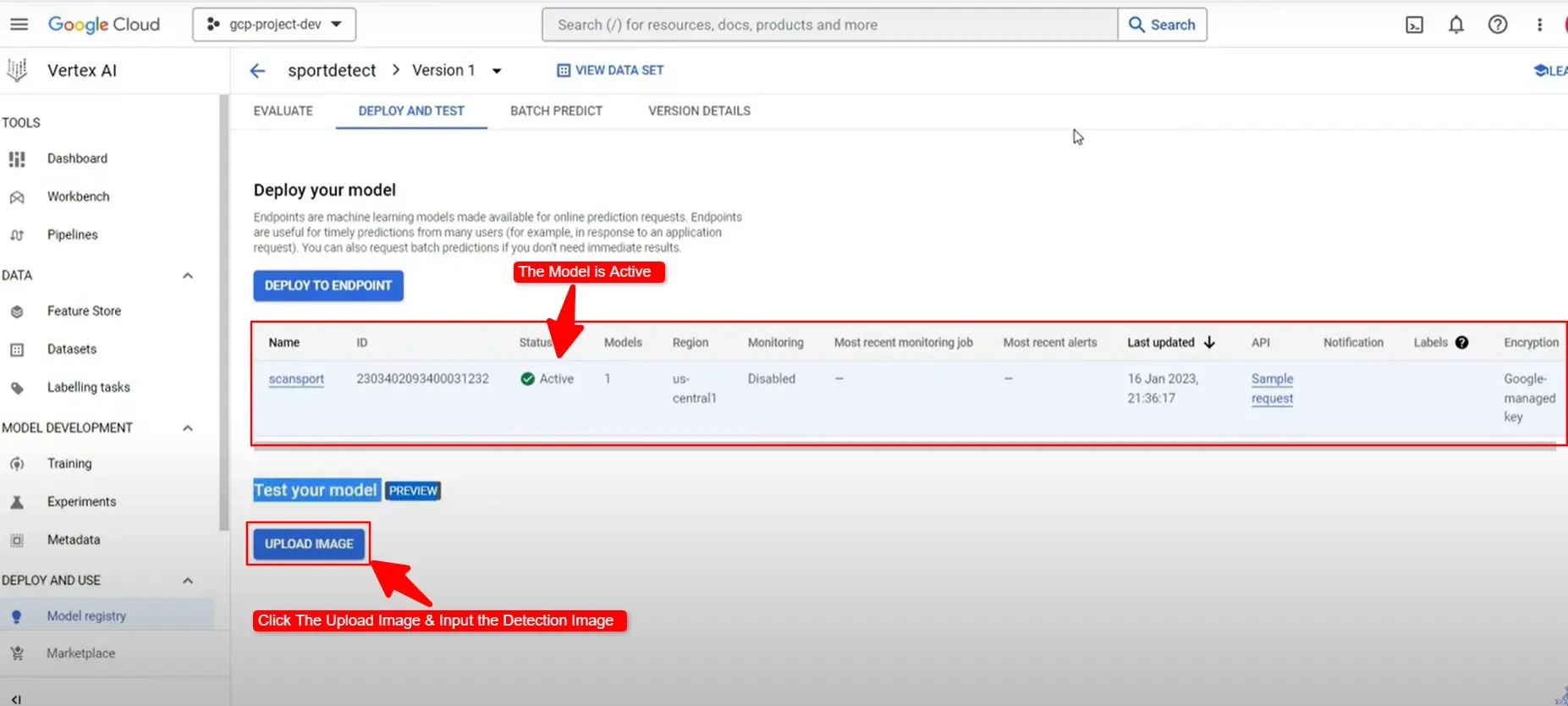
- Input the image and detect the image class is "horse_racing".
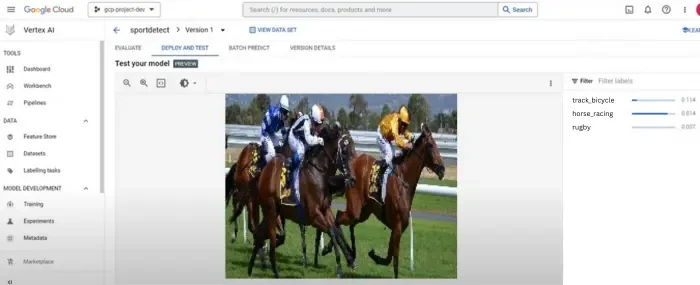
Step 15: Test the Model with API Request
You can send an API request using Python:
import requestsimport jsonurl = "https://us-central1-aiplatform.googleapis.com/v1/projects/YOUR_PROJECT_ID/endpoints/YOUR_ENDPOINT_ID:predict"headers = {"Authorization": "Bearer YOUR_ACCESS_TOKEN"}data = json.dumps({"instances": [{"feature1": 1.2, "feature2": 3.4}]})response = requests.post(url, data=data, headers=headers)print(response.json())
7. Best Practices for Using Vertex AI
- Optimize Costs - Use batch predictions to reduce costs.
- Monitor Performance - Enable Vertex AI Model Monitoring.
- Use AutoML for Simplicity - Ideal for non-experts.
- Enable Logging - Use Google Cloud Logging for debugging.
FAQs (Frequently Asked Questions)
1. Is Vertex AI free?
Answer: Vertex AI offers free credits, but pricing depends on computer usage.
2. Can I use Vertex AI without coding?
Answer: Yes! AutoML allows model training without writing code.
3. What ML frameworks does Vertex AI support?
Answer: Vertex AI supports TensorFlow, PyTorch, scikit-learn, and XGBoost.
4. How do I reduce training costs?
Answer: There are reduced training costs.
- Use pre-trained models.
- Use batch predictions instead of real-time API calls.
5. How do I improve model accuracy?
Answer: There are improved model accuracies.
- Use more training data.
- Fine-tune hyperparameters.
Conclusion
Vertex AI is a powerful, scalable, and fully managed AI platform that simplifies machine learning model training, deployment, and monitoring on Google Cloud. It provides an end-to-end solution for businesses and developers looking to build AI-powered applications without managing complex infrastructure.
With AutoML for beginners and custom model support for experts, Vertex AI caters to both non-technical users and experienced data scientists. It automates MLOps, scales effortlessly, and optimizes costs using batch predictions, Spot VMs, and pre-trained models.
However, while Vertex AI is ideal for cloud-based AI development, it may not be the best choice for businesses that require full hardware control, on-premise deployment, or multi-cloud flexibility.
As AI adoption grows, Vertex AI remains a top choice for companies looking to leverage machine learning at scale. Whether you're working on image recognition, natural language processing, or predictive analytics, Vertex AI helps streamline the entire ML lifecycle-from training to deployment and beyond.
Ready to build and deploy your ML models? Start using Vertex AI today and take your AI projects to the next level!
